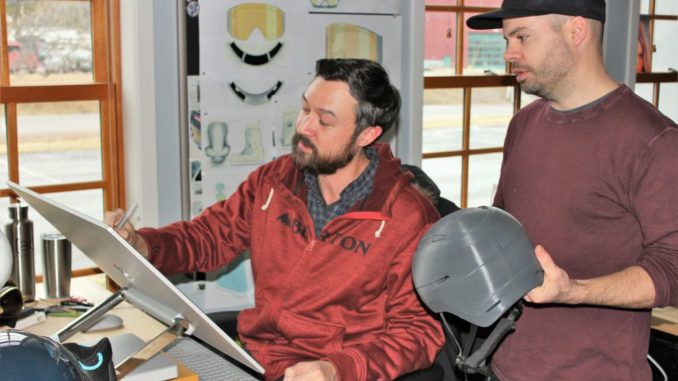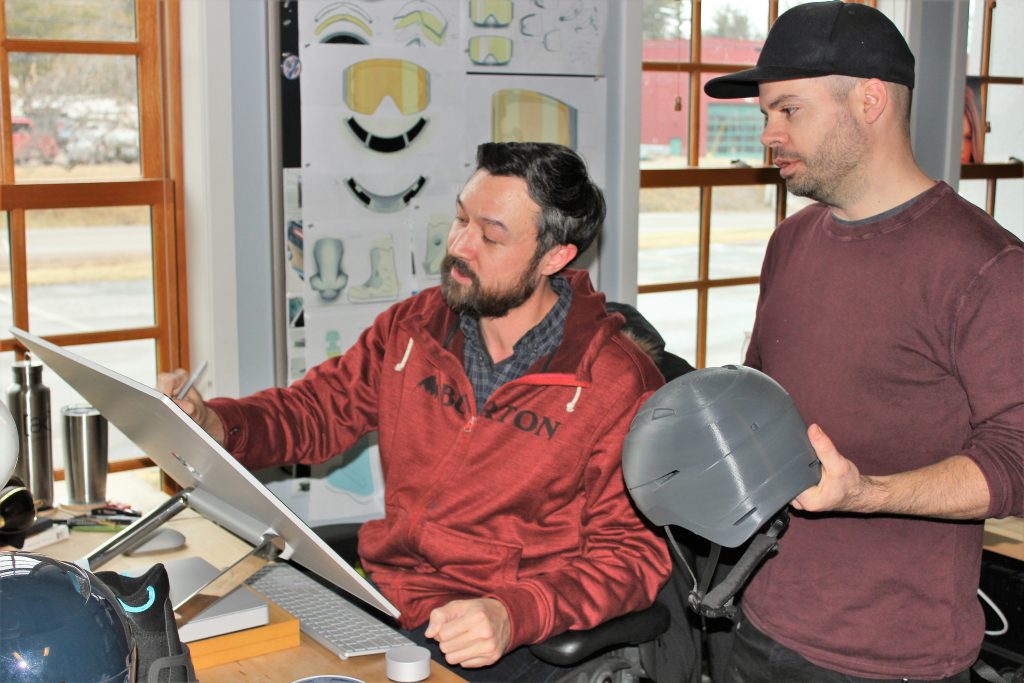
Here’s how Burton Snowboards is creating products for riders around the globe


Chris working through the design process on a Surface Studio.
Burton has been synonymous with the sport of snowboarding for decades. Since the company’s founding, Snowboarding has grown and evolved, even becoming an Olympic sport in 1998. Burton has been a key piece of the sport’s growth and transformation at every step. As the company looks ahead to emerging trends in the sport and charts its own transformation, we sat with Burton’s head of product, Chris Cunningham, to hear about how they create new products for riders around the globe and how Surface is coming into the process.

Chris Cunningham, Head of Product for Burton
Tell us about yourself. What do you do? How did this kind of work find you? What keeps you coming back every day?
My name is Chris Cunningham, and I am the Senior Vice President of Global Product here at Burton Snowboards.
For some background… I was born and raised in the midwest (Indiana) and discovered snowboarding back in ‘91 when I was in seventh grade. I fell in love with the sport and have been snowboarding ever since. I come from an artistic family/background and tend to think like an engineer, but ultimately ended up going to business school (all due to proximity to the local ski hill).
I joined Burton after graduating from Indiana University in 2000 and started in customer service with the goal to eventually work my way into the product department. By 2002, I landed my first ‘product’ job as an Assistant Product Manager of Bindings. From there I ascended the ranks of Product Manager, Category Manager, Director, Vice President, etc. Today, I oversee the entire Product Division for Burton that includes all categories and teams that are responsible for developing Burton’s product lines – from R&D through validation and production.
What keeps me and many others coming back each and every day is the continuous pursuit to make better product. You’re only as good as your last product line, and there is always the next revision, innovation, or leap forward around the corner. Having the opportunity to constantly work on products you love and use, and then obsess about how to make them better, then actually making it happen is my dream job. Burton is also just an amazing place to work…great people, vibe, etc.
Burton is a leader in the industry, building both apparel and equipment for athletes and riders. In your opinion, what drives the company’s success?
I think this is best answered by ‘The Burton Stance’ (image below). Put simply; we are a passionate group of riders that focus on what is best for riders. When you put the user at your focal point (this can be a pro snowboarder, average snowboarder, or even a beginner) the rest will follow. We are in it for the snowboarding, and I think that gives us an advantage.

“The Burton Stance”
Where do you get your creative inspiration?
Inspiration can come in many forms. Our creative teams pull from anything and everything that might provoke their interest. This can range from art, music, industrial design, architecture, furniture, fashion, etc. Creativity extends through the technical fundamentals of a product to the graphics. More than most outdoor gear, a snowboard presents a canvas for some amazing graphics design.
We use both trend (WGSN) and consulting (Camp High Collective) services to help pull ourselves out of our comfort zone. We also simply work with a lot of talented and creative individuals that like to push themselves creatively. Sometimes getting inspiration can simply come from turning to your colleague, seeing what they are working on, and it sparks the next idea for your own category. Last, but not least, we pull inspiration from our professional team of riders. These individuals are at the forefront of what is happening in the world of snowboarding; simply listening to their interest, ideas, and needs, can quickly inspire our design teams.
What has your creative approach been? Tell us about your creative workflow; going from idea to product historically.
The workflow can vary from category to category, but the overall process isn’t too different between Hardgoods (products like snowboards, bindings, boots) and Softgoods (outerwear, accessories, backpacks). We like to kick off the season with what we call a ‘seasonal lens’ that helps us frame both our creative and business intents for the season. This lays down the foundation we work from.
From there, new products and designs are briefed-in from our line planners to our Creative and Design teams. Ideas and concepts are then sketched and comped and the iterative process between designers, merchandising, engineering, etc. begins. We have a general stage gate process we move the work through until we get to a final design or proof of concept. From there, our proto and development teams come into the picture and start to turn concepts into actual prototypes we can touch and feel, and eventually validate through lab and on-snow testing. After a few more rounds, we eventually get to a final design and specification we feel confident can move into manufacturing/commercialization.
Obviously, the complexity of the product or project can vary the timing of this process from just a few months to multiple years.

Chris Cunningham and Chris Doyle in Burton’s prototype lab.
What excites you most about adding Surface devices into this process? What do you feel these products will allow your team to do that was either difficult or impractical previously?
We love to add new tools into our toolbox, and both the Surface Pros and Studios have been welcomed additions. The Surface Pro are such powerful little machines. While at my desk, it’s an extremely powerful and capable PC. When up and walking about the office, it becomes a useful tablet helpful in capturing notes, sharing ideas, presenting plans, etc. Our engineering and ID teams are using Surface Studios to explore new ways to work in 3D design. In many cases, the mouse is becoming obsolete, and I even had one design engineer suggest she might ‘ditch her keyboard altogether’ and just work from the screen.
In either case, I think what Surface allows for a more immersive experience into the work on screen. It’s no longer point, click, type. It all about zoom, flip, scale, rotate, shade, draw, etc.

Chris and his team in a creative meeting where ideas are sketched.
How has the sport changed during your tenure? With this in mind, how you approach reinventing and innovating something as well-known and well-loved as the snowboard?
Since joining Burton, the sport has only continued to evolve, and on so many fronts. Riders continue to progress to levels once thought never possible and with that, the expectations of the product progress as well. That is always a welcomed challenge for our teams. What’s less obvious is that over time the products we make for beginner riders and kids have made the sport far more accessible to anyone who wants to learn, and from a product perspective, that’s exciting too. Just the fundamentals of making product lighter, stronger, faster, can keep us coming back to the table ready to reinvent and innovate. As stated above, you’re only as good as your last product line, so the question of ‘how can we make it even better?’ always exists.

Source: Here’s how Burton Snowboards is creating products for riders around the globe



Leave a Reply